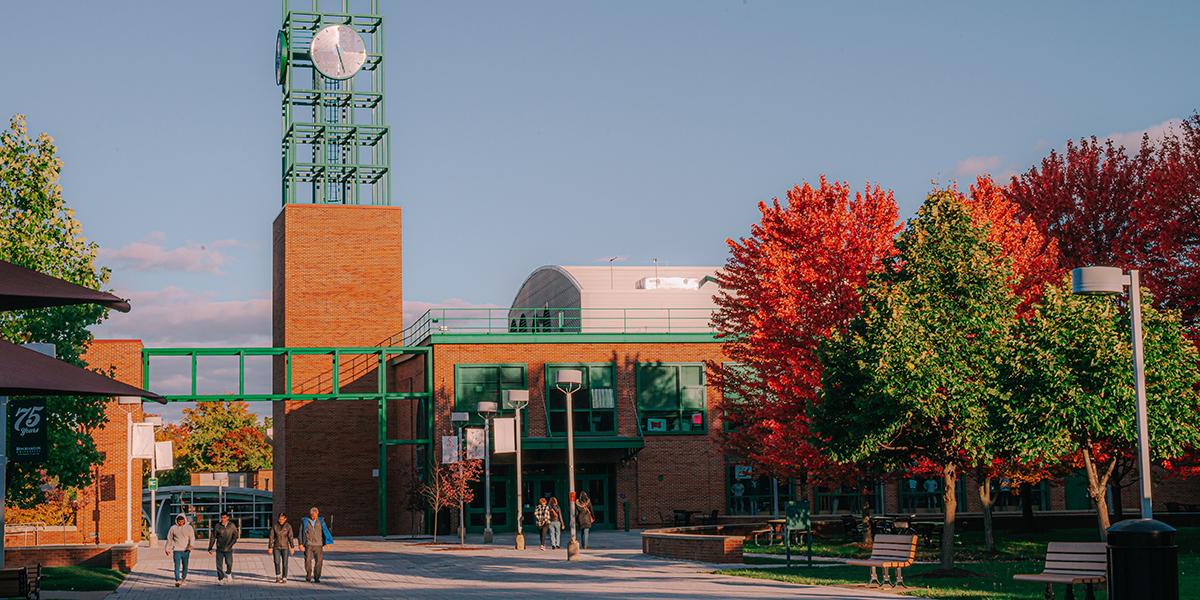Binghamton University moves forward with ambitious faculty hiring plan

Binghamton University has an unprecedented number of faculty searches in the works for fall 2023, for 30 replacement hires and 36 new hires supported by a $53 million SUNY-wide faculty hiring initiative. Binghamton University is receiving $6.5 million of the SUNY-wide total.
This SUNY initiative, which has been proposed as a five-year plan, is much better than the hiring we were able to do under the five-year SUNY 2020 plan when we had to pay for new hires, said President Harvey Stenger. “Back then we had to increase enrollment every one of those years by hundreds of students, so we had to figure out how to manage a growing enrollment at the same time we were growing faculty,” he said. “Now we don’t have to grow enrollment, but we will grow our faculty, mostly in fundable research program areas.”
“It is an extraordinary thing for someone to come into a provost position and immediately be offered the opportunity to lead a once-in-a-generation hiring initiative,” said Executive Vice President for Academic Affairs and Provost Donald Hall. “I have experience with other situations where I’ve come in as a dean and been asked to downsize. This is my first opportunity to look not only at the 30 replacement positions we are seeking to fill, but also new growth positions.
“This support allows us to dream,” Hall added. “And that’s what I’ve asked my deans and others do to. I asked them to think about where we have existing research strengths and about things we know we need to do that demonstrate our commitment to our students, our research enterprise, our community and the world.”
The proposals Hall asked for addressed how the hires would add to the University’s existing research strengths or point us in a new direction, what discipline, what space was available, and expected salary and startup costs. “I also reminded the deans that we’re all part of this process and need to make sure we can do it,” he said. “This is all pointing us toward that goal of doing a step change in terms of our profile as a research university and in terms of our research expenditures.”
Of 49 proposals received, Stenger and Hall were in clear agreement on the 36 hires that are moving forward, with the expectation these faculty will be active, funded researchers. “We received good proposals for hiring both beginning and tenured faculty,” Stenger added.
At the same time, the deans had been asked to pull together teams of faculty in the areas of health sciences and materials science to develop a list of potential cluster hires in those areas, Stenger said. “About 17 of the 36 proposals we selected to move forward are from this process. Getting the money from the state has given us the option to bring in faculty from this cluster hire brainstorming.”
The job positions have all been approved and many if not most of the search committees are put together, Hall said. “We’re very much in process now and people are going full steam ahead on the searches.”
All universities have challenges in a highly competitive environment in terms of hiring diverse faculty, Hall said. “I don’t think we’re facing unique challenges, but we have advantages including a low cost of living and state benefits that make this an extraordinarily attractive place as well as a collegial campus committed to success,” he said. “We’re a place that, once we get people here for an on-campus interview to meet potential colleagues, they’ll see the livability and get a sense of who we are and how we treat each other, and our common aspirations and commitment to our students and community. Then we become a very attractive place for people to consider.
“Now we’re concentrating on making sure these 36 searches are successful,” Hall added. “They do draw very heavily on the cluster hire brainstorming done before I arrived, but also address new areas that fell outside of the clusters. The deans had existing talent or the planning in place to make sure these new hires will be in line with research aspirations.”
As the searches proceed, the challenges of where the new hires will be located and how to manage startup costs come next, Stenger said. “The provost is negotiating with the deans about splitting the startup costs for this once-in-a-lifetime opportunity, a change in policy from past practice.”
In addition, the campus must cover benefits for the hires, so of the $6.5 million allocated, only about $3.9 million is available for salaries.
“We do know it’s going to be tight space-wise,” Stenger added, “and we are working on identifying sites where we could put up a building or two, putting together some renderings and concept designs for what the building(s) would look like and what the cost would be. Then the governor would need to include funding in the state budget.
“Everyone will benefit from this,” Stenger added. “The prospect of seeing up to 66 new faculty here next year is an unparalleled opportunity to see this University take itself into the next level of national research prominence.”
“We also taking it a year at a time,” Hall said. “We’re committed to making sure we’re successful, but state budgets come and go. Whatever happens — three, four, five years from now — we will benefit tremendously from these hires.”

